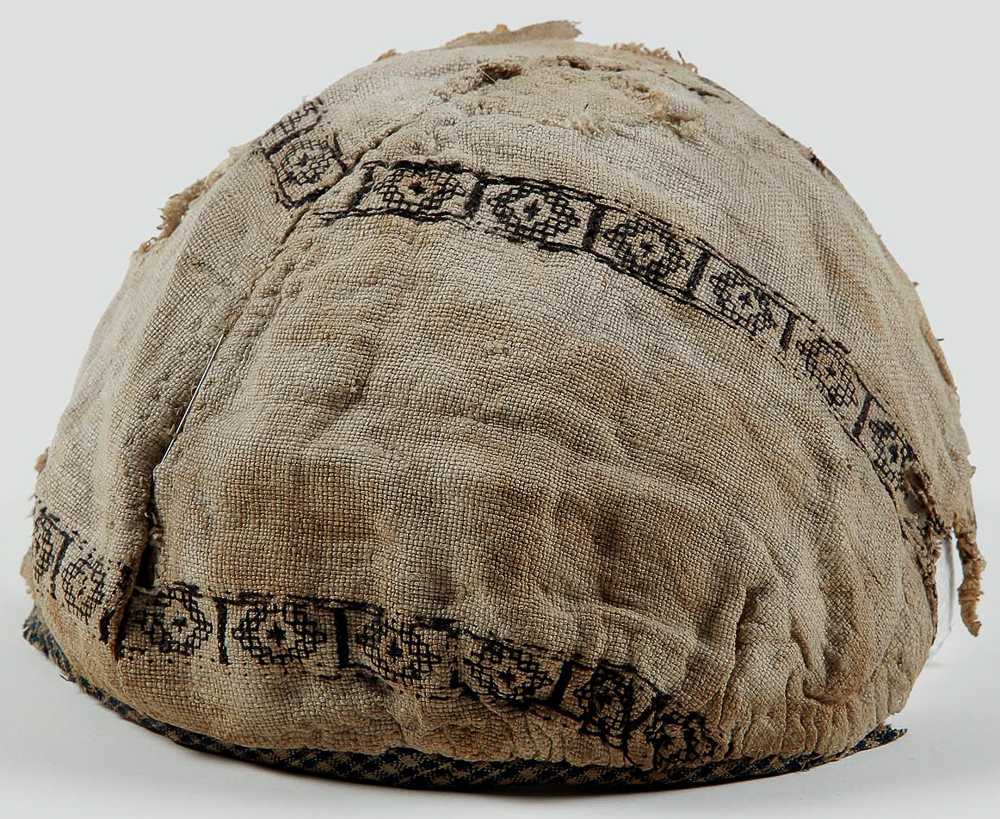A bonnet made by assembling and sewing several pieces and layers of ecru linen in order to give the required shape and greater resistance. Once finished, the edges were covered, probably to mask the seams and make it more comfortable to wear. Decorative bands with geometric motifs (lozenges, squares and stars), have been embroidered in brown wool, in running cross and chain stitching.
Origin:
Egypt
Date:
12th - 15th century
Material:
Linen and wool
Dimensions:
Pattern part: H. 15 cm; L. 16 cm; circumference: ± 46 cm
Comparisons:
This piece is characteristic of those made by the Mamluks (1250-1517). For clothes such as tunics, (or galabieh), shirts and caps, they re-used wearing apparel by reassembling several pieces several pieces of fabrics.
Provenance:
Collection Coptic textiles Fill-Trevisiol: donation
Location:
Musée royal de Mariemont
Assemblage of pieces of linen cloth with woollen embroidery
Main cloth:
linen S: 16/cm and 14/cm
Lining cloth:
linen Z: 15/cm and 14/cm
Embroidery:
brown wool S
Ribbon:
natural-coloured and blue wool Z: checked weave
Special techniques:
first embroidered, then sewn; the main parts are sewn with linen Z2S; next the lining parts are sewn to the corresponding main parts, where the seams of the lining are not closed; next the hem (both layers) is turned towards the inside and finished with the checked ribbon
